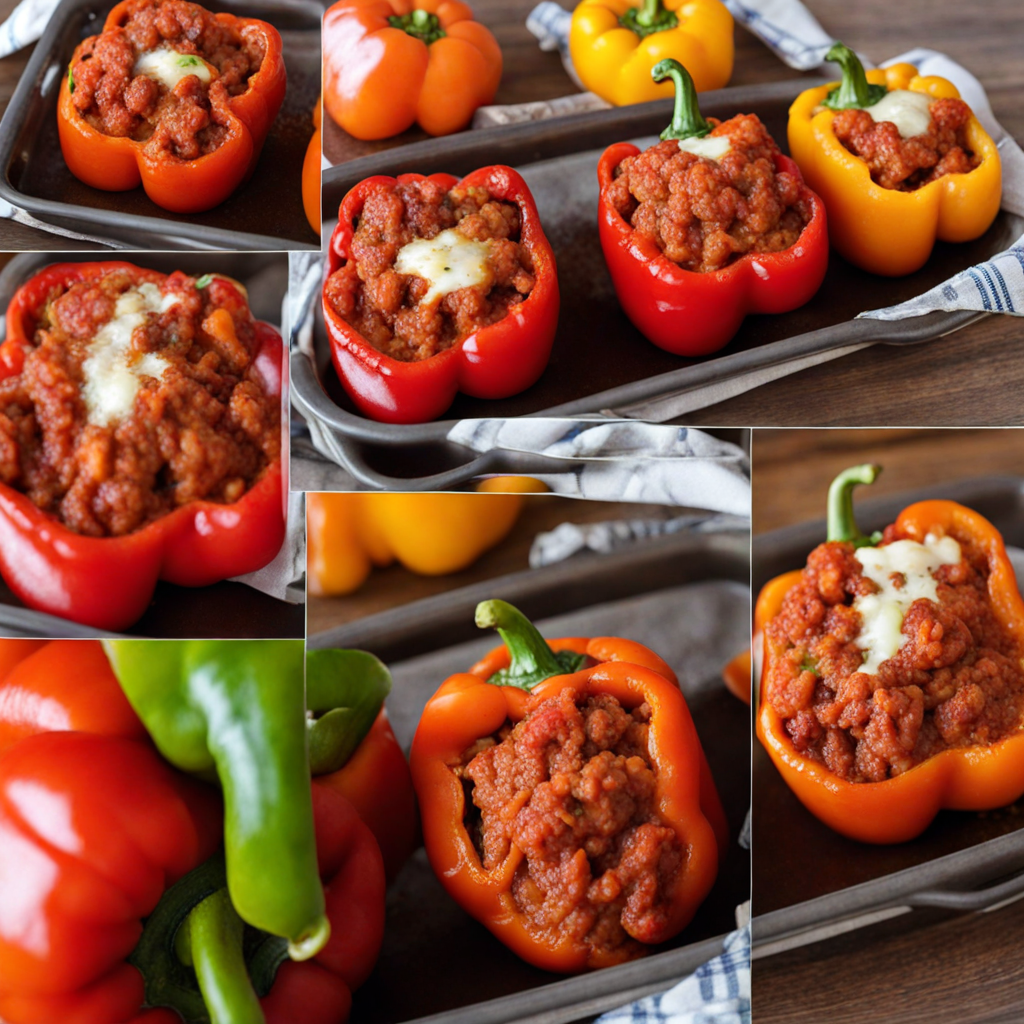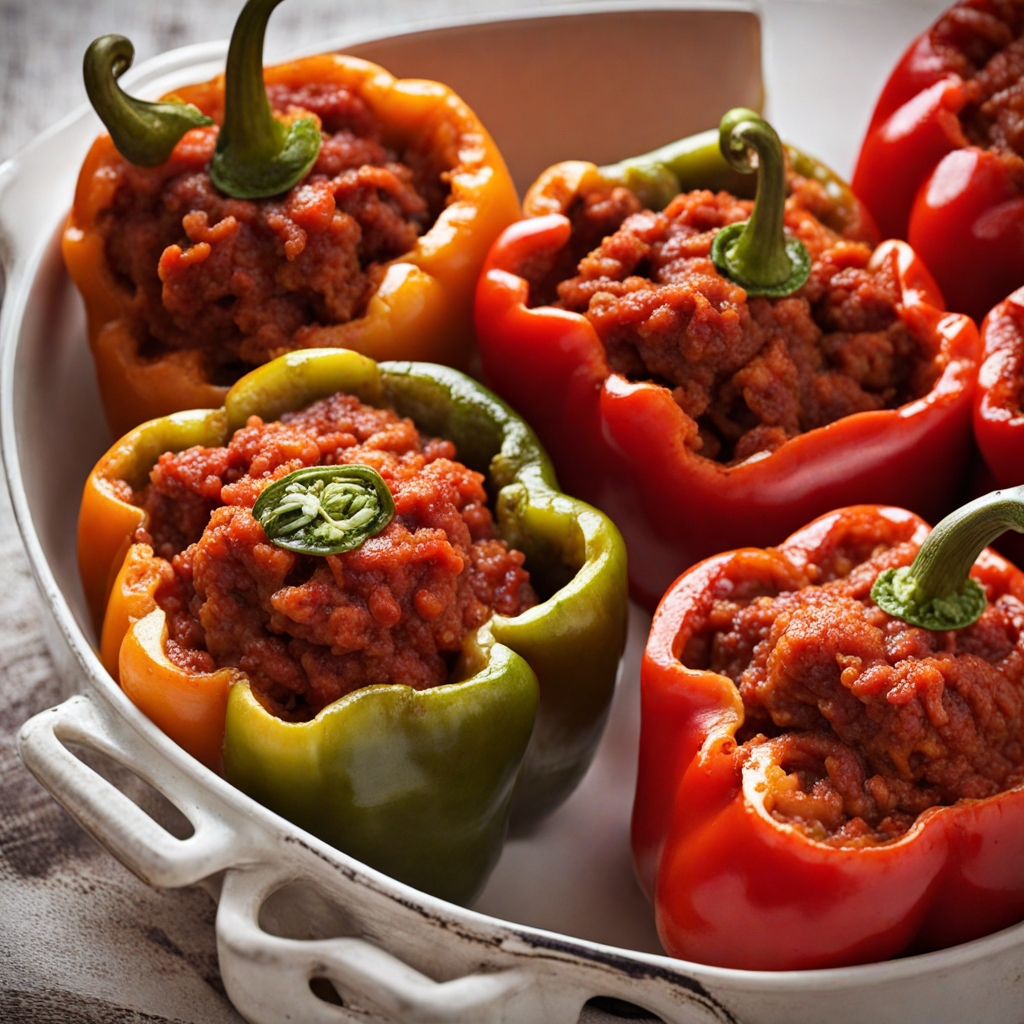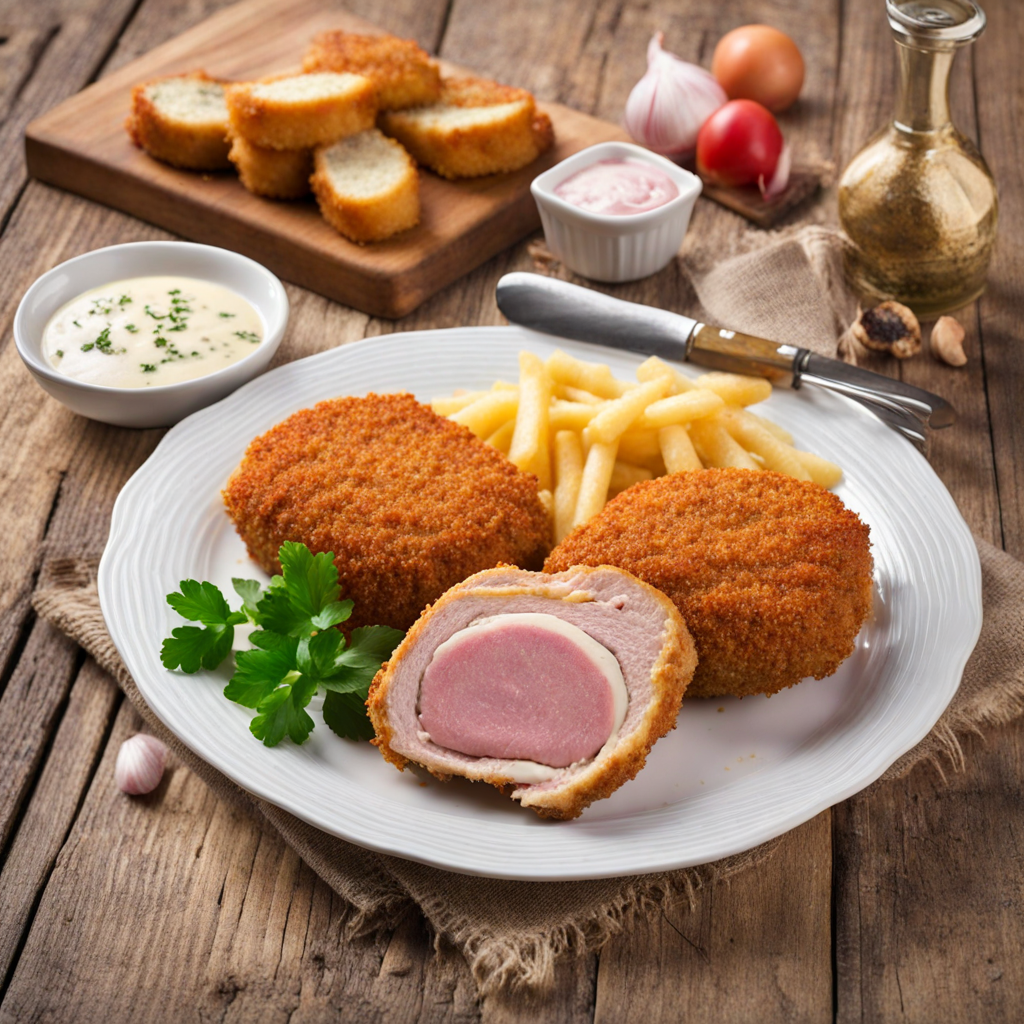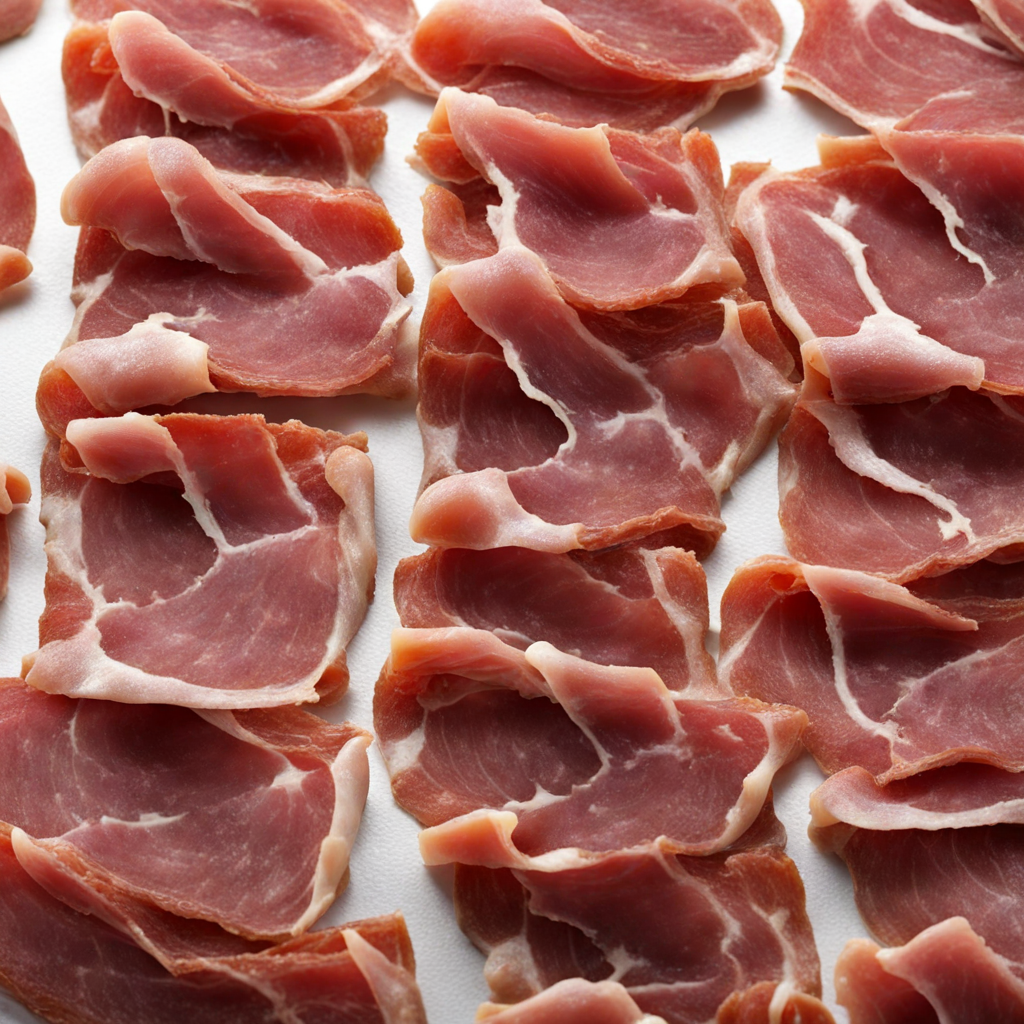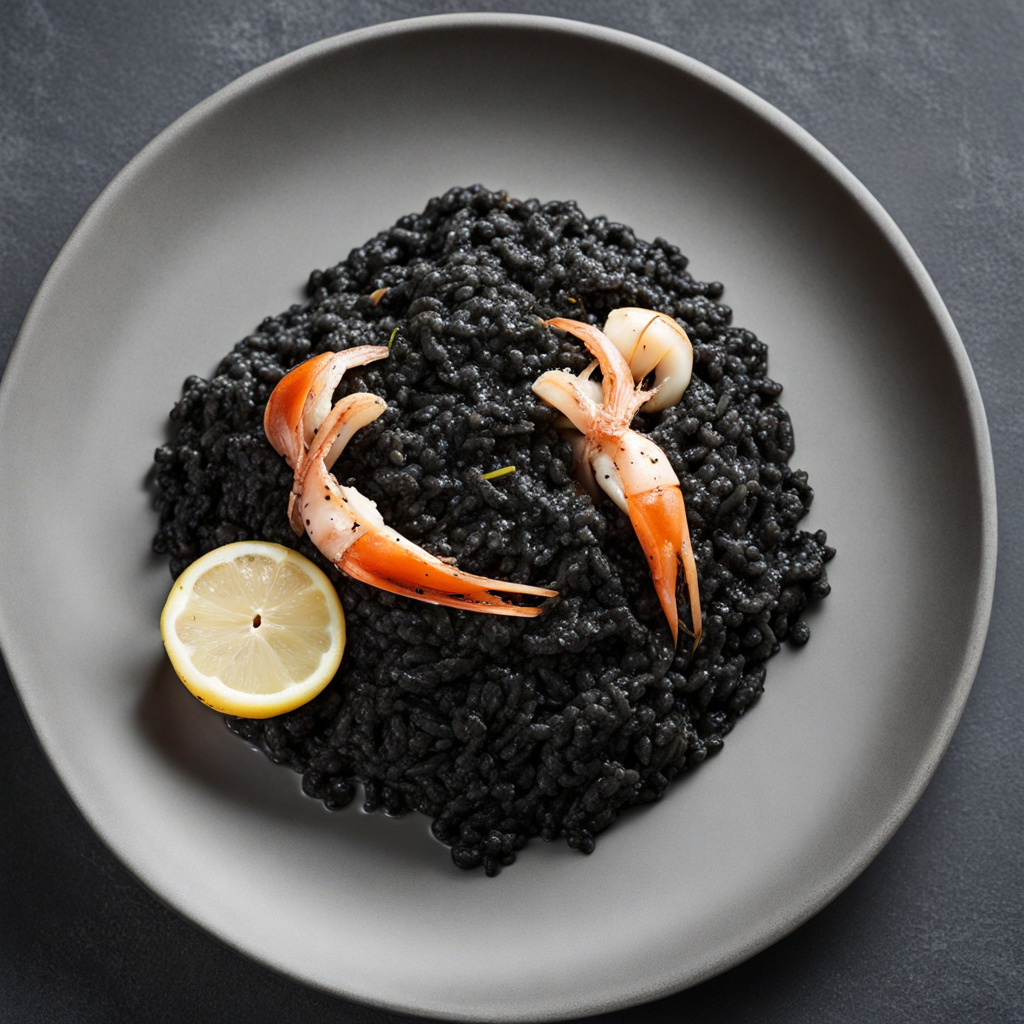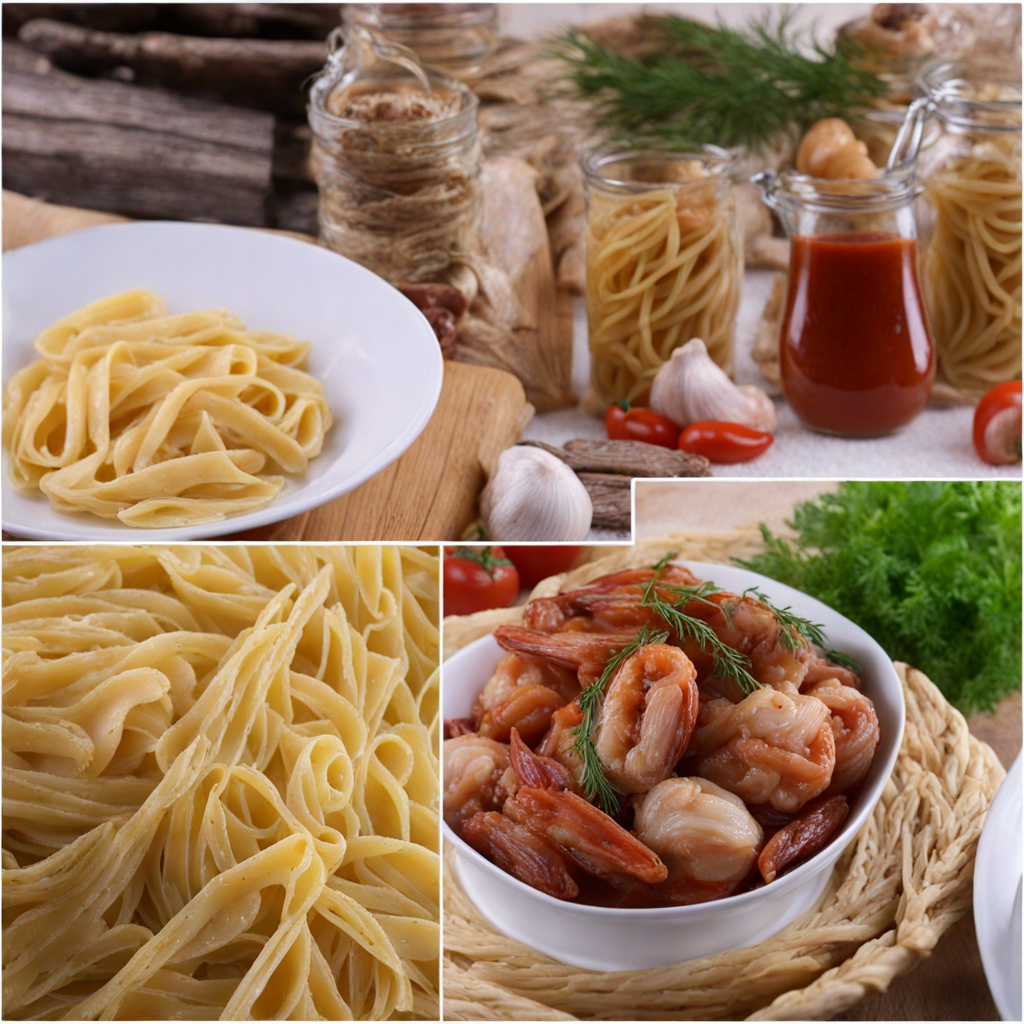Stuffed Peppers
Stuffed Peppers, or "Punjene Paprike," is a beloved dish in Croatian cuisine that showcases the country's rich agricultural heritage and flavorful ingredients. The dish features vibrant bell peppers, usually red or green, which are hollowed out and generously filled with a savory mixture of ground meat, typically a blend of pork and beef, combined with rice, herbs, and spices. This filling is seasoned with onion, garlic, and fresh parsley, giving it a comforting warmth and depth of flavor that captures the essence of home-cooked Croatian meals. The preparation of Stuffed Peppers is a labor of love, as each pepper is carefully crafted to create a perfect balance of textures and tastes. Once filled, the peppers are nestled into a pot and simmered in a rich tomato sauce, which not only enhances their flavor but also adds a beautiful glossy finish. The slow cooking process allows the peppers to absorb the aromatic sauce, infusing every bite with a delightful sweetness and tanginess that complements the savory filling. This dish is often served with a dollop of sour cream on top, which adds a creamy contrast to the hearty peppers. Stuffed Peppers are typically enjoyed as a main course, accompanied by crusty bread or a side of mashed potatoes, making it a satisfying meal perfect for family gatherings or festive occasions. The combination of flavors, textures, and the warmth of the dish makes Punjene Paprike a true taste of Croatian tradition that invites anyone to explore its delicious offerings.
How It Became This Dish
Punjene Paprike: A Culinary Journey Through Croatian Heritage As the sun rises over the lush landscapes of Croatia, a country with a rich tapestry of history and culture, one can’t help but be drawn to the aromas wafting from kitchens across the nation. Among the beloved dishes that embody the spirit of Croatian cuisine is *punjene paprike*, or stuffed peppers—a dish that not only tantalizes the taste buds but also tells a story of tradition, community, and resilience. Origins of Punjene Paprike The roots of *punjene paprike* can be traced back to the agricultural practices of ancient civilizations that settled in the region, particularly the Mediterranean and Eastern European influences. The pepper, believed to be native to Central and South America, made its way to Europe in the late 15th century with the voyages of Christopher Columbus. It quickly gained popularity across the continent, including in the Balkans, where it found a welcoming home in Croatian kitchens. The specific tradition of stuffing peppers likely evolved as a practical solution to utilize surplus produce during the bountiful harvest seasons. The technique of stuffing vegetables is not unique to Croatia; it is seen in various forms around the world, from Greek *gemista* (stuffed tomatoes and peppers) to Middle Eastern *dolmas*. However, the Croatian version is distinct in its hearty filling and rich flavor profile, a reflection of the local ingredients and culinary practices. Cultural Significance *Punjene paprike* holds a special place in Croatian culture and is often associated with family gatherings and festive occasions. The preparation of this dish is a communal activity, where family members come together in the kitchen, sharing stories and laughter while they clean, stuff, and cook the peppers. This act of cooking transcends mere sustenance; it fosters a sense of belonging and continuity, passing down recipes and techniques through generations. In Croatian households, especially in rural areas, *punjene paprike* is a staple dish served during Sunday family lunches, holidays, and celebrations. It is often accompanied by traditional sides such as crusty bread or polenta, which soak up the savory juices of the dish. The act of sharing a meal often symbolizes unity and love, making *punjene paprike* a dish synonymous with nurturing bonds within families. Development Over Time Over the centuries, *punjene paprike* has evolved, reflecting the diverse influences and regional variations found within Croatia. The basic concept of stuffing peppers remains constant, but the fillings and preparation methods vary widely. In the regions of Slavonia and Baranja, for example, the filling often consists of ground pork mixed with rice, herbs, and spices, following the robust flavors characteristic of Slavonian cuisine. Conversely, in coastal areas like Dalmatia, seafood may be included in the stuffing, showcasing the influence of Mediterranean flavors. Some variations incorporate local herbs such as dill or parsley, while others may add a touch of smoked paprika or pepper to enhance the dish's depth. The method of cooking has also seen adaptations over time. Traditionally, *punjene paprike* would be cooked slowly in a pot over an open flame, allowing the flavors to meld beautifully. Modern kitchens, however, often employ ovens or slow cookers, making it easier for busy families to enjoy this time-honored dish. Modern Interpretations As Croatian cuisine has garnered international attention, *punjene paprike* has found its way onto global menus, often reimagined by chefs who wish to honor its traditional roots while introducing contemporary twists. The rise of the farm-to-table movement has also encouraged a return to using fresh, local ingredients, further enhancing the dish’s appeal in a modern context. Vegetarian and vegan adaptations of *punjene paprike* have emerged, replacing meat with lentils, quinoa, or a medley of vegetables, catering to the growing demand for plant-based options. This evolution reflects a broader trend in gastronomy, where traditional dishes are reinterpreted to meet diverse dietary preferences while maintaining their cultural significance. Conclusion The journey of *punjene paprike* from its humble origins to its status as a cherished dish in Croatian cuisine is a testament to the enduring power of food to connect people across time and space. It embodies the resilience of Croatian culinary traditions, showcasing the ability to adapt and evolve while staying true to its roots. In each bite of *punjene paprike*, one can taste the history of Croatia—the agricultural bounty of the land, the communal spirit of its people, and the rich tapestry of cultural influences that have shaped its cuisine. Whether enjoyed in a rustic family home or a chic urban eatery, *punjene paprike* offers not just a meal, but a taste of Croatia’s heart and soul, reminding us of the importance of tradition, community, and the simple joy of sharing food with loved ones.
You may like
Discover local flavors from Croatia


